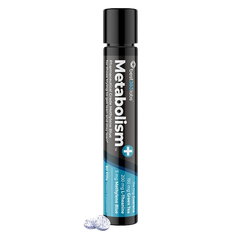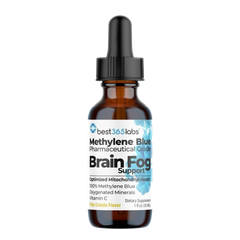Methylene Blue: A Neurohealth Revolution
Methylene blue, also known as methylthioninium chloride, is a synthetic dye that has been used in medicine for over a century.
It was first synthesized in 1876 by the German chemist Heinrich Caro. Initially, it was mainly used as a staining agent in microscopy to make bacteria visible, but scientists soon discovered its medical properties. In the early 1890s, its effectiveness against malaria was recognized, making it one of the first antimicrobial drugs.

What is methylene blue used for today?
Today, methylene blue has found much broader application—not just as a treatment for malaria, but also for conditions such as methemoglobinemia, a disorder where the blood cannot effectively transport oxygen. It is sometimes administered intravenously to treat acute poisoning, such as cyanide or carbon monoxide poisoning. Methylene blue is also used in neurobiology to support neuronal function and reduce oxidative stress in the brain.
Pioneering applications of methylene blue: From cellular health to neuroprotective benefits
Methylene blue is currently experiencing a remarkable resurgence in research and medical use, particularly in the field of neurobiology. It has shown great promise in the treatment of neurodegenerative diseases such as Alzheimer's, Parkinson’s, and other cognitive disorders. Methylene blue supports cellular energy production by enhancing mitochondrial electron transport, a crucial process for generating energy within cells. This is especially valuable in conditions where the mitochondria—the cell’s "powerhouses"—are impaired. Additionally, methylene blue reduces oxidative stress in the brain, which plays a key role in the onset and progression of neurodegenerative diseases. Thanks to its antioxidant properties, it protects brain cells from harmful free radicals, supporting their health and function. These qualities make methylene blue a promising tool for supporting cognitive performance, slowing age-related decline, and reducing the progression of diseases like Alzheimer’s and Parkinson’s.

Applications of methylene blue in neurological disorders and cognitive support
At lower doses, methylene blue is being explored as a supplement for neurological disorders such as ADHD (Attention-Deficit/Hyperactivity Disorder). Its ability to reduce oxidative stress and support mitochondrial function is believed to enhance neural communication. This could improve focus, memory, and overall cognitive performance. In products like Best365Labs NeuroPro, it is used specifically for its neuroprotective effects, and the dropper format offers a flexible and easily adjustable method of intake.
Use methylene blue with caution
While methylene blue offers many benefits, it’s essential to use it responsibly. When treating neurological disorders or using it over a longer period, it’s important to consult with a healthcare professional or naturopath to determine the appropriate dosage. High doses may cause unwanted side effects such as nausea, headaches, or serotonin syndrome—especially when combined with antidepressants.




